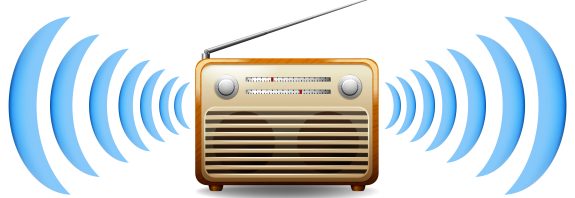Wireless Internet and the features of its operation

In this article, we’ll explore what wireless Internet is and the features of its operation. Wireless Internet has become an integral part of modern life, enabling us to connect to the network without cables or wires. From Wi-Fi at home to mobile 5G on the go, this technology offers convenience and mobility.
What is Wireless Internet?
Wireless Internet is a method of data transmission using radio waves, eliminating the need for physical cables like fiber-optics or Ethernet. It relies on electromagnetic waves to carry information between devices (smartphones, laptops, routers) and access points or base stations.
Main Types of Wireless Internet:
- Wi-Fi: A local network for homes or offices.
- Mobile Internet: 3G, 4G, 5G via cellular towers.
- Satellite Internet: Uses satellites for remote areas.
- WiMAX: A rarer technology for broader coverage.
How Does Wireless Internet Work?
The operation of wireless Internet is based on transmitting data via radio frequencies. Here are the key steps:
Signal Source:
- For Wi-Fi, it’s a router connected to a wired Internet connection from a provider.
- For mobile Internet, it’s base stations operated by carriers, linked to the network via fiber-optics.
Data Transmission:
The signal is transmitted through radio waves on specific frequencies:
- Wi-Fi: 2.4 GHz, 5 GHz (and with Wi-Fi 6, also 6 GHz).
- Mobile Internet: From 700 MHz to over 40 GHz (depending on the generation—3G, 4G, 5G). Data is encoded into electromagnetic waves and sent to the receiver.
Signal Reception:
A device (smartphone, laptop) with a built-in or external module (Wi-Fi adapter, SIM card) captures the signal and decodes it back into digital data.
Information Exchange:
The device sends requests (e.g., to open a website) and receives responses through the same wireless network.
Features of Operation
Wireless Internet has unique characteristics that set it apart from wired connections:
Mobility
Users aren’t tied to one location. For example, with 4G/5G, you can work in a park or on the road, while Wi-Fi allows free movement within the router’s coverage area.
Radio Frequency Spectrum
It uses a limited frequency resource, which can lead to interference from other devices (microwaves, neighboring routers).
5G addresses this with a wider frequency range, including millimeter waves (mmWave).
Environmental Dependency
Signal quality depends on distance from the source, obstacles (walls, trees), weather (for satellite connections), and user density.
For instance, Wi-Fi at 2.4 GHz penetrates walls better but offers lower speeds than 5 GHz.
Speed and Latency
- Wi-Fi can reach hundreds of Mbps in home settings, while 5G can hit up to 10 Gbps in ideal conditions.
- Latency (ping) in 5G drops to 1 ms, critical for gaming or autonomous vehicles.
Coverage Limitations
- Wi-Fi works within tens of meters from the router.
- Mobile Internet depends on tower locations, and satellite Internet requires a clear view of the satellite.
Advantages of Wireless Internet
- Flexibility: No need for cables, simplifying connections anywhere.
- Scalability: Easy to connect new devices without physical ports.
- Accessibility: Mobile and satellite Internet reach remote areas where laying cables is challenging.
Disadvantages
- Stability: Wired networks are generally more reliable due to less susceptibility to interference.
- Security: Radio waves are easier to intercept, requiring encryption (WPA3 for Wi-Fi, VPN for mobile).
- Resource Limits: In densely populated areas, frequencies can become overloaded, reducing speeds.
Technologies Supporting Wireless Internet
- Wi-Fi: Standards like 802.11n/ac/ax (Wi-Fi 4, 5, 6) for local networks.
- LTE/5G NR: Protocols for cellular networks with Massive MIMO and beamforming support.
- Encryption: Protects data from interception (WEP, WPA, TLS).
Use Case Examples
- Home: Wi-Fi for streaming video, work, and gaming.
- Travel: 4G/5G for navigation and communication.
- Remote Areas: Satellite Internet (Starlink) for villages or ships.
Conclusion
Wireless Internet and the features of its operation. Wireless Internet functions through the transmission of data via radio waves, providing mobility and convenience while facing challenges related to stability and security. Its performance depends on frequencies, equipment, and environmental conditions. From Wi-Fi in your apartment to 5G on the streets, this technology continues to evolve, making our lives more connected and flexible. For maximum speed and reliability, pay attention to signal quality and the modernity of your equipment—it’s the key to a comfortable wireless experience!









